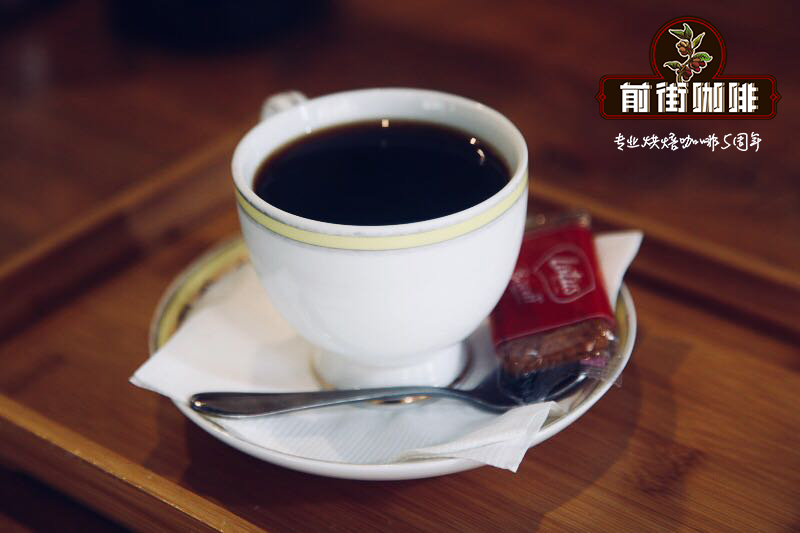How does Malawian coffee taste? What's the difference between Malawi and Kenya? Introduction to manors in Malawi

For information, please follow the coffee workshop (Wechat official account cafe_style)
Malawi, the official full name of the Republic of Malawi (Zichewa: Dziko la Mala?i; English: Republic of Malawi) is a landlocked country located in southeastern Africa, bordering Zambia, Mozambique and Tanzania. The correct position is 9 °45 & # 39 south latitude to 17 °16 & # 39; east longitude 32 °35 & # 39 min 35 °24 & # 39; The capital, Li Longwei, is located in the central part of Malawi.
Malawi is a landlocked country, the whole region is long and narrow in the north-south direction, high and dry, coffee production should grow in the highlands of the south. Malawi and planting are quite high above sea level, between 90-1200 meters, with a cool climate and good quality.
Malawian coffee takes "AA" as the highest grade. Some farms produce high-quality coffee beans, which are favored by selected coffee producers and are listed for sale in the name of the farm.
Malawi AA is washed, coffee is rich in oil, mixed with a variety of flavors, with caramel, cream, nutty herbs cool, spices, sweet chocolate and raisins, rum aroma, in the coffee temperature, the soft berry acid is active again, you will feel it when you taste it carefully.
Compared with Kenya, Malawi coffee also has a considerable degree of sweetness and aroma, while the sour taste is a lower style. If the sour in Kenya is compared to the treble, the sour in Malawi feels like a mid-bass.
Around the 1870s, missionaries brought Arabica coffee trees to Malawi, and commercially grown coffee soon took root in the mountains of Cholo and Mulanje. Smallholder farming became popular in Malawi at that time, with each coffee farmer planting about 200 coffee trees and controlling the picking and quality of coffee beans.
Shelling and treatment were very important in the age of small farmers, and in 1946, Malawi had its own national "cooperative". Coffee production in Malawi has plummeted due to leaf rust, and coffee cultivation has cast a veil over the country. Perhaps farmers are not willing to drink without coffee, or it may be caused by a unique geographical environment, and coffee eventually grew up in Malawi. Today, Malawi, like most other producing areas in the world, is divided into two planting patterns, one for manors and the other for small farmers. The manor is planted in the southern part of Malawi, "Cholo, Mount Mulanje, Sumba, Mangoche".
The investment of the manor is high, and the natural output is also high, but the quality of coffee beans is not so good compared with small farmers. First, because coffee is not the main agricultural product of the manor, the status of tea and tobacco is higher than coffee; second, because of the elevation, most of the elevations of coffee estates are distributed between 900 and 1200m. In Malawi, there are five cooperatives composed of small farmers in the northern part of Malawi: Misuku Cooperative, Phoka Cooperative, Viphya North Cooperative, Nkhatabay Higlands Cooperative, Southeast Mzimab Cooperative and Ntchisi East Cooperative in the Central region.
Important Notice :
前街咖啡 FrontStreet Coffee has moved to new addredd:
FrontStreet Coffee Address: 315,Donghua East Road,GuangZhou
Tel:020 38364473
- Prev

The difference between Golden Manning and Old Manning Coffee
For information, please pay attention to the coffee workshop (Wechat official account cafe_style) Manning is not the name of the producing area, the place name, the port name, nor the name of the coffee variety. How did it get its name? In fact, it is a phonetic error of the mandheling people in Mandaining, Indonesia. During the Japanese occupation of Indonesia during World War II, a Japanese soldier drank mellow coffee in a cafe.
- Next

Is Burmese coffee only instant? What brand of Burmese coffee beans is good for Burmese coffee beans?
For information, please pay attention to the coffee workshop (Wechat official account cafe_style) Myanmar is located in the west of Southeast Asia, with a land area of more than 670000 square kilometers, is the largest country in the China-India Peninsula. Among the ten ASEAN countries, it is second only to Indonesia. Myanmar is the only country in the world with the two most populous countries, that is, India and China, and it is also China's land access to the Indian Ocean.
Related
- Does Rose Summer choose Blue, Green or Red? Detailed explanation of Rose Summer Coffee plots and Classification in Panamanian Jade Manor
- What is the difference between the origin, producing area, processing plant, cooperative and manor of coffee beans?
- How fine does the espresso powder fit? how to grind the espresso?
- Sca coffee roasting degree color card coffee roasting degree 8 roasting color values what do you mean?
- The practice of lattes: how to make lattes at home
- Introduction to Indonesian Fine Coffee beans-- Java Coffee producing area of Indonesian Arabica Coffee
- How much will the flavor of light and medium roasted rose summer be expressed? What baking level is rose summer suitable for?
- Introduction to the characteristics of washing, sun-drying or wet-planing coffee commonly used in Mantenin, Indonesia
- Price characteristics of Arabica Coffee Bean Starbucks introduction to Manning Coffee Bean Taste producing area Variety Manor
- What is the authentic Yega flavor? What are the flavor characteristics of the really excellent Yejasuffi coffee beans?

